Succulents: Uncommon Plants for Tropical Homes and Gardens
If you were one of the 70,000 who visited HortPark duringthe recent GardenTech 2009, you might have noticed the fleshy plants that adorned a garden archway and hung from swinging baskets, decorating both sides of the linkway to the main event tent. These plants are succulents, or water-retaining plants, from two genera, Sedum and Senecio. Neither is native to our equatorial climate, making them unique additions to any home or garden.
The succulent species from these genera are popular houseplants in Singapore, for being attractive, hardy and easy to maintain. However, not all these succulent species are suited to our tropical climate: they originate from varied habitats, and differ greatly in terms of their growth requirements. The more temperate species are unable to tolerate heat, and any attempt to grow them here will fail.
The handful of species featured here can grow in Singapore, although they will rarely flower. This is because our climate lacks temperature changes on a seasonal or daily basis. They can be planted in dish gardens as indoor decoration, and in outdoor gardens of cacti and succulents or even a rooftop garden!
Depending on the species, these succulents should be grown in areas that are exposed to at least six hours of full sun to partial shade. They grow best in free-draining media: an ideal medium would be 50% sifted burnt earth mixed with 50% commercial cactus mix. Most species are easily propagated from stem cuttings.
The plants should be watered only when the top inch layer of the soil has dried up slightly, and fed weekly using half-strength liquid fertiliser or coated, slow-release fertiliser pellets.
There are two main genera of succulents featured in this article.Plants from the genus Sedum are mainly succulent plants, and are commonly called stonecrops. Belonging to the Crassulaceae family, some species are edible and have medicinal properties. Others are used as green roof plants, both locally and in temperate countries.
Species from the Senecio genus are more varied. They can be leaf, stem and tuber succulents, but there are others which are climbers, shrubs and small trees. They belong to the Asteraceae family and produce daisy-like flowers in branched clusters.
By Pearl Ho & Wilson Wong
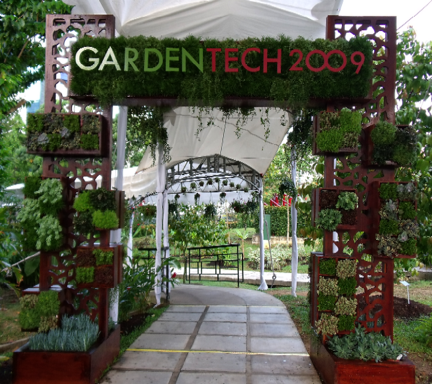
A range of succulent plants was used to decorate the archway that welcomed visitors during the recent GardenTech 2009.
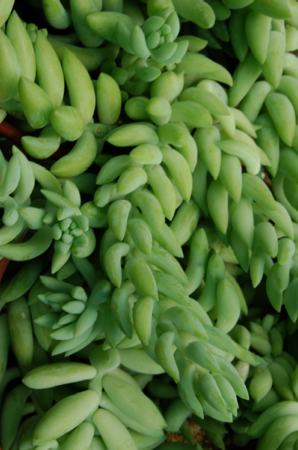
The donkey’s tail, Sedum morganianum, has spindle-shaped leaves with a silver-blue cast. If allowed to grow, its long, pendulous stems can reach 1 m or more, making it suitable for growing in hanging baskets in sheltered, semi-shaded areas. It is commonly confused with S. burrito, which features smaller and rounder leaves and is trickier to grow in Singapore.
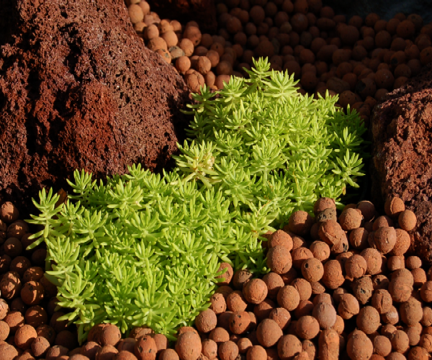
Sedum mexicanum, commonly called the Mexican stonecrop, grows as a mound. It is best grown under direct sunshine where the short, linear leaves take on a bright, greenish yellow colour. It can be grown as a groundcover plant and are useful for adding colour to borders and containers.
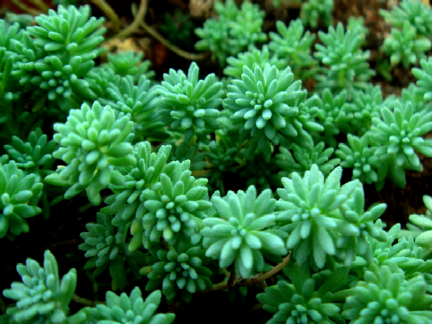
Sedum sexangulare, commonly known as tasteless or watch chain stonecrop, is a mat-forming species characterised by tiny oblong leaves that are arranged in six parallel rows. It thrives in semi-shade and can be used in rock walls, between large stones on a terrace, or in containers.
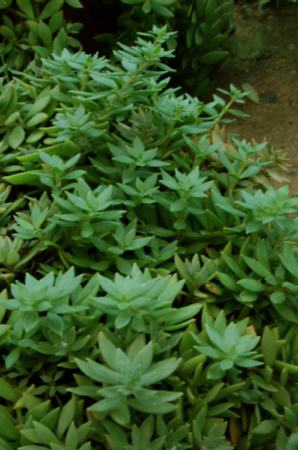
Sedum sarmentosum is another mat-forming species with roundish leaves. It looks best when grown under semi-shade as its leaves turn into an unattractive yellow colour when exposed to intense sunshine and overly dry conditions. Common names of this plant include stringy stonecrop and graveyard moss.
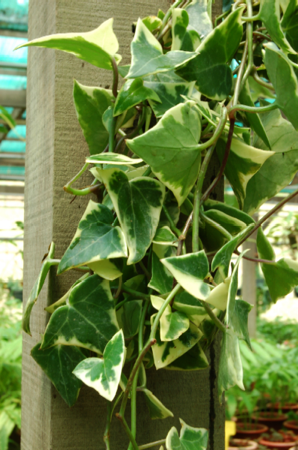
Senecio macroglossus is a vine that resembles the English ivy (Hedera helix). Its leaves are smooth and fleshy to touch and have five pointed corners. This vine is a drought-tolerant plant that thrives in semi-shaded areas can be allowed to trail over a pot. Being a climber, it seizes any chance to twine its stems around any vertical support can find. This picture shows the variegated variety
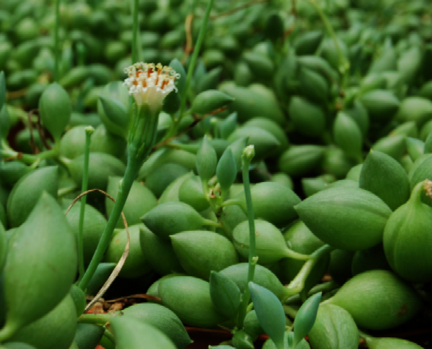
Commonly known as string-of-pearls or string-of-beads, Senecio rowleyanus is a trailing species that puts forth long, pendulous stems of roughly spherical leaves. Suited for hanging baskets in a sunny area, this plant should be kept on the dry side to prevent rot. The fleshy leaves are poisonous and should not be consumed
Have views or comments on this article? Let us know via this form. If you would like to give us feedback on any other areas relating to our parks and gardens, please submit via https://www.nparks.gov.sg/feedback


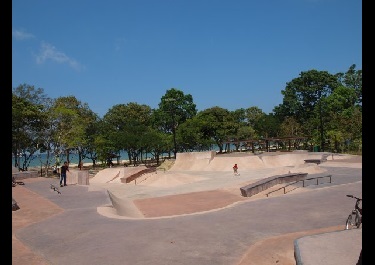
Catherine 8/25/2014 11:28:40 AM